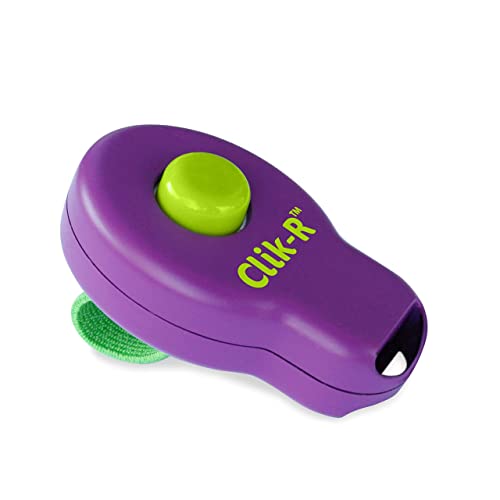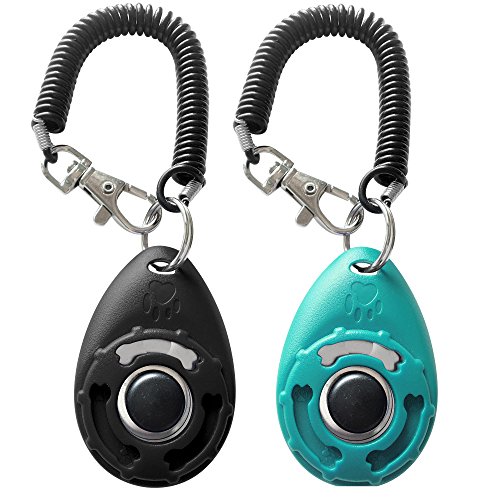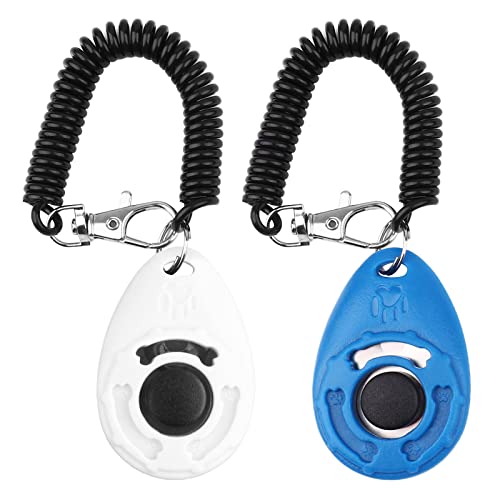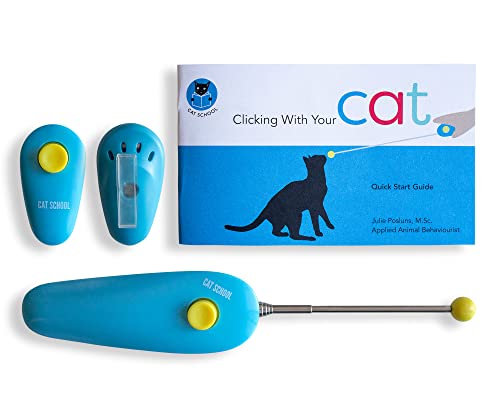The sniffles begin unbidden, a tickle in the throat escalates to a full-blown cough, and the comforting presence of a purring cat suddenly becomes the source of watery eyes and an unrelenting itch. For millions around the globe, this is the frustrating reality of cat allergies, a condition that pits the desire for feline companionship against the uncomfortable and often debilitating physical reactions they trigger. It's a common predicament, testing the devotion of even the most ardent cat lovers, and often leaving individuals feeling torn between their affection for cats and the persistent discomfort their allergies impose. But take heart; while cat allergies are prevalent and can feel overwhelming, they are far from insurmountable. Understanding the intricacies of these allergies, from their root causes and varied symptoms to accurate diagnosis and, crucially, effective management strategies, is the key to navigating this challenge and, for many, paving the way for a life where feline affection and personal comfort can coexist. This exploration will delve into the heart of cat allergies, unraveling the mystery behind the sneezes and sniffles, and providing a comprehensive guide to managing symptoms and potentially even living harmoniously with our feline friends, allergy symptoms notwithstanding.
The pervasive myth surrounding cat allergies often points the finger directly at cat hair, blaming those soft strands for the cascade of allergic reactions. However, the true culprit is far more subtle and, surprisingly, not hair itself. Cat allergies are primarily triggered by a protein known as Fel d 1, a deceptively simple molecule responsible for a world of allergic discomfort. It’s essential to dispel the hair myth right away: it’s not the fur you see, but the invisible protein Fel d 1 that’s the real allergen. This protein, produced by cats, is the key to understanding and ultimately managing these common allergies.
So, where does this allergy-inducing Fel d 1 protein originate within our feline companions? The primary source is the sebaceous glands, microscopic structures located in the skin of cats, tasked with producing sebum, an oily substance that keeps skin and fur moisturized. Fel d 1 is secreted within this sebum and, as cats groom and shed, it finds its way onto their fur and skin. Another significant source is saliva. Cats are meticulous groomers, and during their self-cleaning routines, they deposit saliva across their fur. Since Fel d 1 is also present in saliva, this grooming behavior effectively distributes the allergen throughout their coat. As cats shed fur and skin, they release dander – microscopic flakes of dried skin – into the environment. This dander is a potent carrier of Fel d 1, becoming airborne and settling onto surfaces throughout homes, clinging to furniture, carpets, clothing, and even embedding itself into walls. While to a lesser extent, urine and anal glands can also contain Fel d 1, contributing to the overall allergen load in a cat's environment.
The manner in which Fel d 1 spreads throughout our homes is what makes cat allergies so pervasive and challenging to manage. As cats groom, shed, and simply move around, Fel d 1 becomes airborne, readily drifting through the air and settling on virtually every surface imaginable. Its microscopic size allows it to penetrate deep into carpets, upholstery, and even clothing fibers, making complete removal incredibly difficult. This airborne nature and tendency to adhere to surfaces explain why even individuals who don't own cats can experience allergic reactions in cat-friendly environments, such as visiting a friend's home or entering a building where cats reside. The allergen is persistent, lingering long after a cat has left a space, contributing to the ongoing challenge for those with sensitivities.
The question naturally arises: why do some individuals develop allergies to Fel d 1 while others remain unaffected? The answer lies in the intricacies of the human immune system. In individuals with cat allergies, their immune system mistakenly identifies the harmless Fel d 1 protein as a dangerous invader. This misidentification triggers an allergic reaction, an overzealous response from the immune system intended to fight off this perceived threat. In this overreaction, the immune system releases histamine and other inflammatory chemicals, which are the root cause of the uncomfortable allergy symptoms we experience – sneezing, runny nose, itchy eyes, and skin irritation. Genetic predisposition plays a significant role in determining who develops allergies. Individuals with a family history of allergies, whether to cats, pollen, dust mites, or other allergens, are at a higher risk of developing cat allergies themselves. Environmental factors also contribute; early childhood exposure to allergens, the overall state of an individual's immune system, and even exposure to pollutants can influence the likelihood of developing allergies. It's a complex interplay of genetics and environment that ultimately determines who becomes sensitized to Fel d 1 and experiences the frustrating symptoms of cat allergies.
Recognizing the symptoms of a cat allergy is the first step towards effective management. These symptoms can manifest in a variety of ways, often mimicking common colds or other respiratory ailments, leading to initial confusion. Respiratory symptoms are the most prevalent and often the most bothersome. Frequent and sometimes violent sneezing fits are a hallmark of cat allergies, as the body attempts to expel the perceived irritant from the nasal passages. Runny nose and nasal congestion often accompany sneezing, with a clear or watery nasal discharge and a persistent feeling of stuffiness. An itchy nose and throat, characterized by a tickling or scratching sensation, further contribute to the discomfort. Coughing, both dry and sometimes mucus-producing, can also be a prominent symptom, as the airways react to the allergen. In more severe cases, cat allergies can trigger wheezing and shortness of breath, signaling a more significant constriction of the airways and requiring prompt attention. Chest tightness can also occur, adding to the feeling of respiratory distress.
Eye symptoms are another common manifestation of cat allergies. Itchy, watery eyes, characterized by redness, irritation, and excessive tearing, are highly typical. Conjunctivitis, an inflammation of the conjunctiva, the delicate membrane lining the eyelids and the surface of the eye, can also develop, causing further redness, swelling, and discharge.
While less frequent than respiratory and eye symptoms, skin reactions can also occur in response to cat allergens. Itchy skin and rashes, often manifesting as hives – red, raised, itchy bumps – can appear, especially in areas of direct contact with cats. For individuals with pre-existing skin conditions like eczema, exposure to cat allergens can exacerbate their symptoms, leading to flare-ups and increased itching and inflammation.
Beyond these common presentations, less frequent symptoms can also emerge. Facial pain and pressure, stemming from sinus congestion caused by allergic rhinitis, can be experienced. Sleep disturbances are another indirect consequence, as nasal congestion, coughing, and persistent itching can disrupt sleep patterns, leaving individuals feeling fatigued and unwell. It's crucial to remember that the severity of cat allergy symptoms varies significantly from person to person. Some individuals may experience mild and manageable sniffles, while others may suffer from debilitating respiratory distress and persistent discomfort, impacting their quality of life significantly.
Confirming a suspicion of cat allergies requires a professional diagnosis. While self-diagnosis based on symptoms is common, accurate confirmation and personalized management strategies necessitate consultation with a healthcare professional, ideally an allergist. The diagnostic process typically begins with a thorough review of medical history and symptom evaluation. A doctor will inquire about the nature and duration of symptoms, potential triggers, and any family history of allergies, gathering crucial information to guide further testing.
The most common and widely used diagnostic tool is the allergy skin prick test. This relatively simple and quick procedure involves applying small drops of allergen extracts, including cat allergen extract, to the skin, usually on the forearm or back. The skin is then lightly pricked, allowing a minute amount of the extract to penetrate the surface. Within about 15-20 minutes, the test sites are examined for reactions. A positive reaction, indicating sensitivity to a specific allergen like cat dander, is characterized by the development of a red, itchy, raised bump, similar to a mosquito bite, at the test site. Skin prick tests are advantageous due to their speed, relatively low cost, and ability to test for multiple allergens simultaneously.
Alternatively, or in conjunction with skin prick tests, blood tests can be employed to diagnose cat allergies. These tests, specifically the Specific IgE Antibody Test, measure the levels of specific IgE antibodies in the blood, which are immune system proteins produced in response to allergens. A blood sample is drawn and sent to a lab for analysis, where it is tested for the presence and quantity of IgE antibodies specific to cat allergens, such as Fel d 1. Blood tests are particularly useful when skin testing is not feasible, such as in individuals with severe eczema or those taking certain medications that can interfere with skin test results. They may also be preferred for young children or individuals who are averse to skin pricking. In complex cases, or to refine diagnostic accuracy and treatment strategies, a more advanced blood test known as Component Resolved Diagnosis (CRD) may be utilized. CRD goes beyond identifying general cat allergy sensitivity and pinpoints reactivity to specific components within cat allergen extracts, like different Fel d proteins. This detailed information can be valuable for personalized treatment planning and predicting the effectiveness of immunotherapy. Ultimately, consulting with a doctor or allergist is paramount for obtaining an accurate diagnosis and developing a tailored management plan. Self-diagnosis can be misleading, and effective allergy management relies on professional guidance and evidence-based strategies.
Managing cat allergies is rarely a one-size-fits-all approach; it typically requires a multi-pronged strategy, combining allergen avoidance, medication, and sometimes immunotherapy. Allergen avoidance strategies are focused on minimizing exposure to cat allergens in the environment, thus reducing the trigger for allergic reactions. Creating cat-free zones within the home is a cornerstone of avoidance. Designating bedrooms, in particular, as strictly off-limits to cats, especially for the allergic individual, provides a sanctuary free from allergens, allowing for restful sleep and reduced nighttime symptoms. Limiting cat access throughout the house, restricting them to certain rooms or areas, can further reduce overall allergen exposure.
Regular and meticulous surface cleaning is crucial for removing accumulated allergens. Dusting should be performed frequently using damp cloths to prevent stirring up dust and allergens into the air. Vacuuming should be done regularly, utilizing a vacuum cleaner equipped with a HEPA filter, which is specifically designed to trap microscopic allergens and prevent them from being recirculated back into the air. Washing bedding and curtains frequently, ideally weekly, in hot water, effectively removes allergens that accumulate in these fabrics. When choosing furniture, consider leather or hard surface options, which are easier to clean and less likely to trap allergens compared to upholstered furniture.
Air filtration systems, utilizing HEPA air purifiers, can significantly reduce airborne allergen levels within homes. Placing HEPA air purifiers in bedrooms and living areas, where people spend significant time, can continuously filter out airborne allergens, creating cleaner and less allergenic air. Laundry practices also play a role. Washing clothes frequently, especially those exposed to cats, helps remove accumulated allergens. Changing clothes after significant contact with cats minimizes allergen transfer throughout the home.
When avoidance measures alone are insufficient to control symptoms, medication offers crucial relief. Antihistamines, available both in oral form and as nasal sprays, are a mainstay of allergy medication. They work by blocking histamine, the chemical released by the immune system during an allergic reaction, thus reducing symptoms like sneezing, itching, and runny nose. Common oral antihistamines include cetirizine (Zyrtec), loratadine (Claritin), fexofenadine (Allegra), and diphenhydramine (Benadryl), although the latter can cause drowsiness. Nasal antihistamine sprays, such as azelastine, provide targeted relief for nasal symptoms. Decongestants, also available orally and as nasal sprays, work by shrinking swollen nasal passages, effectively alleviating nasal congestion. Oral decongestants like pseudoephedrine (Sudafed) and phenylephrine (Sudafed PE) are available, as are nasal decongestant sprays such as oxymetazoline and phenylephrine. However, caution is advised with nasal decongestant sprays due to the risk of rebound congestion with prolonged use; they are generally recommended for short-term relief only.
Corticosteroid nasal sprays are another class of medication, working to reduce inflammation in the nasal passages. They are particularly effective for managing nasal congestion, runny nose, and sneezing associated with allergies. Examples include fluticasone (Flonase), budesonide (Rhinocort), and mometasone (Nasonex). While generally considered safe for long-term use under medical supervision, it's important to discuss potential side effects with a doctor. Leukotriene modifiers, such as montelukast (Singulair), are oral medications that block leukotrienes, another type of inflammatory chemical involved in allergic reactions. They are often used when antihistamines and nasal corticosteroids are not sufficient or for individuals with co-existing asthma. Eye drops, specifically antihistamine eye drops and lubricating eye drops, provide targeted relief for itchy, watery eyes associated with cat allergies.
For individuals seeking a longer-term solution that goes beyond symptom management, immunotherapy offers the potential to desensitize the immune system to cat allergens. Allergy shots, or subcutaneous immunotherapy (SCIT), involve gradually administering increasing doses of cat allergen extract through injections over time. The goal is to train the immune system to become less reactive to Fel d 1, reducing allergic reactions over the long term. Immunotherapy with allergy shots typically requires regular injections over a period of months to years to achieve full effect, demanding a significant time commitment. However, for many, it can provide substantial and lasting relief. Sublingual immunotherapy (SLIT), also known as allergy tablets or drops, offers a more convenient, needle-free alternative. SLIT involves daily administration of tablets or liquid drops containing cat allergen placed under the tongue. The goal is similar to allergy shots – to desensitize the immune system through oral exposure. SLIT offers a more convenient administration route and a generally favorable safety profile compared to allergy shots, making it an attractive option for many. However, it’s crucial to discuss the effectiveness and availability of SLIT with an allergist to determine suitability.
Beyond environmental control and medical treatments, cat-specific strategies can further reduce allergen exposure and production. Regular cat bathing, done weekly or bi-weekly, can temporarily reduce Fel d 1 levels on a cat's fur and skin. Regular grooming, through brushing, ideally performed outdoors or by a non-allergic person, helps remove loose fur and dander, minimizing allergen shedding into the home. Allergen-reducing cat food formulations, such as Purina Pro Plan LiveClear, claim to reduce Fel d 1 production in cats. These foods typically contain antibodies to Fel d 1 derived from eggs, which bind to the protein in the cat's saliva, reducing its active form. It's important to note that results may vary, and these foods should be considered as one component of a broader allergy management plan. The concept of "hypoallergenic" cats often arises in discussions of cat allergies, but it’s crucial to understand that no cat breed is truly allergen-free. While some breeds, such as Siberian, Sphynx, Balinese, Russian Blue, and Bengal cats, are often marketed as "hypoallergenic," they still produce Fel d 1, albeit potentially in lower quantities. "Hypoallergenic" is primarily a marketing term and does not guarantee an allergy-free experience; individuals with cat allergies may still react to these breeds, although perhaps less severely.
Effectively living with cats despite allergies hinges on a combined approach, integrating avoidance, medication, and cat-specific strategies. For those with mild allergies considering welcoming a cat into their home, a gradual introduction, coupled with consistent medication and environmental control, might help build tolerance over time, under the guidance of a physician. Establishing a consistent hygiene and housekeeping routine, as outlined in the avoidance strategies, becomes an integral part of daily life. Regular consultations with an allergist are essential for ongoing management, allowing for adjustments to the treatment plan as needed and ensuring optimal symptom control. While rehoming a cat is a deeply difficult decision, it is an option to consider as a last resort in severe and unmanageable allergy cases, prioritizing the health and well-being of both the allergic individual and the cat. However, before reaching this point, it is crucial to exhaust all other management strategies and explore every avenue for co-existence.
Dispelling common myths surrounding cat allergies is vital for promoting accurate understanding and effective management. The persistent myth that cat hair is the allergen needs constant correction. It's the Fel d 1 protein, not the hair itself, that triggers the allergic reaction. Similarly, the notion that long-haired cats are inherently more allergenic than short-haired cats is misleading. Hair length doesn't directly correlate with allergenicity; all cats produce Fel d 1, regardless of hair length. Shedding may contribute to allergen dispersal, but even short-haired cats produce allergens and shed. The allure of "hypoallergenic" cats needs to be tempered with reality. No cat breed is truly non-allergenic, and while some may produce less Fel d 1, they can still trigger allergic reactions in sensitive individuals. The idea that you can "outgrow" cat allergies is largely a myth. While symptom severity may fluctuate over time, true and spontaneous resolution of cat allergies is rare; allergies are typically chronic conditions requiring ongoing management, not something simply outgrown. Finally, the belief that removing carpets is the sole solution is an oversimplification. While removing carpets can reduce allergen reservoirs, it’s just one piece of the puzzle. A comprehensive, multi-pronged approach, encompassing avoidance, medication, and cat-specific strategies, is far more effective than relying on a single environmental modification.
In conclusion, cat allergies, while a common and often frustrating experience, are far from an insurmountable barrier to enjoying feline companionship. The key takeaways are clear: cat allergies are primarily triggered by the Fel d 1 protein, not cat hair; symptoms are varied and can range from mild to severe; and accurate diagnosis and effective management are achievable. Hope lies in understanding that cat allergies, while chronic, are highly manageable. A combination of allergen avoidance strategies, appropriate medication, and, for some, immunotherapy, can significantly reduce symptoms and improve quality of life. Empowerment comes from seeking professional diagnosis from a doctor or allergist and actively participating in the development of a personalized management plan. Don’t let allergies steal the immeasurable joy of cat companionship. Understanding your allergies, debunking the myths, and taking proactive steps to manage them can pave the way for a purr-fectly happy life together, proving that even with allergies, the bond between humans and cats can thrive.







